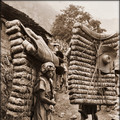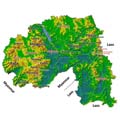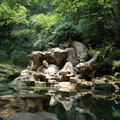Quotes - Pu-erh
„There is also a lack of formal definition for "gu shu." Some say "gu shu" should only refer to trees over 300 years of age, that is left to grow tall, and not pruned back. But in reality, most "gu shu" trees are cultivated, which entails annual pruning to encourage regrowth & lower branches for easy picking. A lot of "gu shu" on the market comes from trees as young as 100 years old, some of which is as short as 1.5m high. But a 100 year old tea tree growing in the wild can also grow higher than 3m high. Eventually the government will legislate what classifies as "gu shu." Until then, let the buyer beware!“

Quotes Tags: Pu-erh, Gushu, Tea production
„The terms "Xiao shu" (small tree) and "tai di" (terrace plantation) are often interchangeably used, but they should be given separate meanings. "Tai di" connotes high intensity farming, with the entire slope cleared & terraced to plant hedgerows & use of pesticide & fertilizer. But in many gu shu growing villages, there are also new tea plantations which are too young to be called gu shu (ie. less than 100 years old), but they aren't exactly "tai di" either. Many of these plants are growing next to old trees, in a bio-diverse forest clearing, with lots of space around them, not all are sprayed & fertilized. In the future, they will grow into "gu shu", until then we should call them "shen tai xiao shu" (naturally grown small trees)“
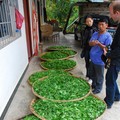
Quotes Tags: Pu-erh, Gushu, Tea production
„I had heard from other puer buyers that Ma Hei farmers now use pesticide & fertilizer to boost yields. But as we stood there critiquing this batch of Ma Hei tea, a large, multi coloured beetle crawled out of the leaf pile. “We call this guy the tea boss” Mr. Gao explained. “If he’s around, it’s a good sign!”“
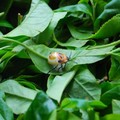
Quotes Tags: Pu-erh, Gushu, Tea production
„When examining maocha, the colour of gu shu leaves tend to be more highly contrasted with a bright white hairy bud/tip surrounded by a grey, open leaf wrapper, with dark black stem & leaves. By comparison, tai di cha is almost all black, due to the use of fertilizer, the leaves grow quickly and the buds have less white hairs.“

Quotes Tags: Pu-erh, Gushu, Tea production
„Mr. Gao showed us how to identify gu shu (ancient tree) tea leaves by looking at their texture, rubbing them between your fingers, and eating them raw. Old tea trees produce thicker, more leathery leaves that don’t easily come apart when you rub them. And gu shu buds should be white & shiny. When you chew them, the flavor is very bitter but there is also a strong sweet fragrance, and the juice is relatively easy to swallow. Tai di cha (terrace plantation tea) is also bitter but with a strong, lasting astringency on the sides & front of the tongue, and the juice is harder to swallow.“

Quotes Tags: Pu-erh, Gushu, Tea production, Experiencing tea
„Mr. Gao pointed out some caterpillars that were fattening themselves on tea leaves. “No pesticides used here.”“
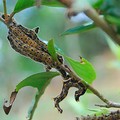
Quotes Tags: Pu-erh, Gushu, Tea production
„I found my early blogging efforts, basically writing down my impressions of the tea I drank every day, to be a worthwhile exercise – it helps me process what I’ve had and what I thought, and once in a while I go back to my own ideas back then and realize how I have developed as a drinker, as well as how a tea may have changed over time. Many of my earlier perceptions are flawed, if not outright wrong, or at least have been modified over time by my experiences since then. Writing about it constantly here helps me work through those thoughts.“
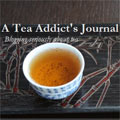
Quotes Tags: Experiencing tea, Pu-erh, Oolong
„Tea learning is, at the end of the day, a solitary experience. No one knows what you’re tasting, so no one but you can teach yourself.“

Quotes Tags: Experiencing tea, Pu-erh, Oolong
„The important thing of all this tea drinking and learning is not so much the drinking itself, but the critical reflection and evaluation that takes place simultaneously. Forget about what others tell you – what do you feel and think when you’re drinking this tea? How does it compare with what you have tried? How does it challenge what you already think you know?“

Quotes Tags: Experiencing tea, Pu-erh, Oolong
„Or perhaps you experiment with different parameters, water, ware, etc. and notice that it performs differently under different circumstances. This type of knowledge is not possible if you only have 25g of a tea. It can really only come with drinking 200, 300, or even 1000g of the same tea.“

Quotes Tags: Experiencing tea, Pu-erh, Oolong
„There is also knowledge that you can gain from drinking the same tea over and over again that you cannot from sampling. This may involve the tea changing on you – a traditionally stored puerh gradually losing its storage taste, for example. Or, it can just be that you start noticing nuances that were there, but were not necessarily obvious the first few times you try it.“

Quotes Tags: Experiencing tea, Pu-erh, Oolong
„In some ways, by doing so you’re basically cupping the tea without cupping it – you’re testing whether or not the tea is good for your style of brewing. Even then, however, a good tea drinker should be adjusting to the tea and trying to brew it as best s/he can, which means that the first try can come out horribly wrong.“

Quotes Tags: Experiencing tea, Pu-erh, Oolong
„What instead happens is that some teas require multiple tastings to reveal themselves one way or another. Sometimes the first time you brew a tea it doesn’t come out quite right not because it’s bad, but because you are still adjusting to it. It helps when you’re using the same teawares all the time, so that the only variable is the tea“

Quotes Tags: Experiencing tea, Pu-erh, Oolong
„Then there is the more nuanced problem of what to do with the samples. It’s quite easy to say that sampling widely will give you experience in tea drinking. In practice, however, that’s not so simple. Of course, trying all kinds of teas will most certainly give you experience. However, it is experience on a relatively shallow level. Certain kinds of teas, such as really bad or really good teas, will probably manifest themselves quite readily. Others, however, are not so obvious. It is actually easier to try teas if you, say, cup them, but then it becomes work and the process is not very enjoyable. This is, ultimately, a hobby, and not a job (for me anyway) so taking the fun away like that is basically missing the point.“

Quotes Tags: Experiencing tea, Pu-erh, Oolong
„One of the things I often advocate for newcomers to tea drinking is to sample widely. Learning about tea is, on some level, not very difficult at all. It requires experience and an active mind to reflect upon and learn from the experiences gained. To gather this experience though, the only way to really do it is to drink a lot of tea. Reading about it or hearing about it really doesn’t do much good, for it is only theory that lacks backing from practical experiences.“

Quotes Tags: Experiencing tea, Pu-erh, Oolong
„You can’t know what is good without knowing what is bad, just like you can’t be aware of the range of possible tastes among shuixian if all you’ve had are light roasted ones. Sampling is about broadening horizons, and it is a low risk way to stretch into areas that you might not be familiar with.“

Quotes Tags: Experiencing tea, Pu-erh, Oolong
„life’s too short to be drinking bad tea“

Quotes Tags: Experiencing tea, Pu-erh, Oolong
„Bĭng: The tea cake itself. Tea cakes or other compressed pu'er can be made up of two or more grades of tea, typically with higher grade leaves on the outside of the cake and lower grades or broken leaves in the center. This is done to improve the appearance of the tea cake and improve its sale. Predicting the grade of tea used on the inside takes some effort and experience in selection. However, the area in and around the dimple of the tea cake can sometimes reveal the quality of the inner leaves.“
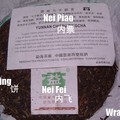
„Nèi piào (内票): A larger description ticket or flyer packaged loose under the wrapper. Both aid in assuring the identity of the cake. It usually indicates factory and brand. As well, many nèi piào contain a summary of the tea factories' history and any additional laudatory statements concerning the tea, from its taste and rarity, to its ability to cure diseases and effect weight loss.“

„Nèi fēi (内飞 or 內飛): A small ticket originally stuck on the tea cake but now usually embedded into the cake during pressing. It is usually used as proof, or a possible sign, to the authenticity of the tea. Some higher end pu'er cakes have more than one nèi fēi embedded in the cake. The ticket usually indicates the tea factory and brand.“

„Wrapper: Made usually from thin cotton cloth or cotton paper and shows the tea company/factory, the year of production, the region/mountain of harvest, the plant type, and the recipe number. The wrapper can also contain decals, logos and artwork. Occasionally, more than one wrapper will be used to wrap a pu'er cake.“

Quotes Tags: Pu-erh
„Smoothness, Softness and Character of Puer Tea
Puerh tea is a type of post-fermented tea. When stored in the correct environment the tea, over time will change, hence - post-fermented. Due to this, the bitterness and astringency will slowly transform. The flavour will soften, become more mellow, rich, the character will become more rounded and mature.“
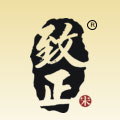
Quotes Tags: Pu-erh, Experiencing tea
„The Sweetness of Tea
When one sips Raw Puerh tea it should very quickly turn sweet in the mouth. The stronger, more long lasting, more even the flavour, the better the tea.“

Quotes Tags: Pu-erh, Experiencing tea
„Fragrance
Broad leaf variety old tree tea aromas can generally be divided into the following;
fruit-flower fragrance, honey-flower fragrance , honey-sweet fragrance, date-jujube fragrance, orchid flower fragrance , camphor fragrance, sticky rice fragrance , lotus flower fragrance , mellow-aged fragrance
Some teas are highly fragrant, others have refined and prolonged fragrance. Although there are many different kinds of fragrance, they should all be natural, smooth and easy to get a feeling for. These fragrances appear when the tea is drunk and are not evident when smelling the tea.“

Quotes Tags: Pu-erh, Experiencing tea
„Astringency
Astringency invariably accompanies bitterness. In some Puer the astringency is more pronounced, the bitterness slightly weaker. A benefit of astringency is that it can help promote salivation. If this is felt on the underside of the the tongue it is a further mark of good tea.“

Quotes Tags: Pu-erh, Experiencing tea
„Bitterness
Broad leaf variety (Sinenesis Assamica) is high in natural constituents; polyphenols, caffeine,theine, etc. A particularly bitter flavour is a special characteristic of the Broad leaf variety, but it is important that it transforms quickly and does not linger. This is a mark of good quality Puer. NB there is a sub-variety in Yunnan - Var. ku cha which has different characteristics and does not transform in the same way.“

Quotes Tags: Pu-erh, Experiencing tea
„Fishy, Mouldy and Dry Flavours
All one's sense organs can be used in assessing tea, but Fishy, Mouldy and Dry Flavours it should be smelled and tasted. Most problems that arise are related to poor quality tea or poor storage. “

Quotes Tags: Pu-erh, Experiencing tea
„Sourness in Raw Puer is due mostly to inadequate airing after the rolling process or, after pressing tea into cakes, they have been immediately exposed to the sun. The tea soup will likely be turbid.“

Quotes Tags: Pu-erh, Experiencing tea
„Tea that is picked in the summer, often referred to as Yu Shui Cha, is not of high quality. In the rainy season, levels of sunshine are comparatively low so it is often not possible to sun dry tea so a wood stove is used to dry it. This can produce a smokey aroma and flavour. With time it will abate, but not considerably, so any smokey tea that one has not witnessed being made is probably best put to one side.“

Quotes Tags: Pu-erh, Experiencing tea
„Smokiness
The art of making tea from ancient tea trees is very old. Hand-roasting is not easily mastered. Any slight error will influence the taste of the tea. Smokiness or yan wei is one example but it should be distinguished from a burned flavour which is described as hu wei. The latter, typically arises when tea is not well roasted and is, unfortunately, not uncommon. Yan wei or smokiness is caused by oven drying. “

Quotes Tags: Pu-erh, Experiencing tea
„The best test is if, when drinking tea, there are any of prickling, tingling, numbing sensations on or near the tip of the tongue. If this is so one can be reasonably certain that agro-chemicals are present.“

Quotes Tags: Pu-erh, Experiencing tea
„Prickling, Tingling, Numbing
Ancient tea trees are all over 100 years old. Their ability to resist natural problems; diseases and infestations is high. This variety of tea tree has existed in this habitat for thousands of years. These trees are already extremely resilient and the environment in which they are growing has mostly been left in untouched. There is no need for tea farmers to use agro-chemicals. But where any such chemicals have been used it will likely take 7-10 years for the residues to abate sufficiently for the tea to be drinkable.“

Quotes Tags: Pu-erh, Experiencing tea
„Closer Examination of Puer
High quality broad leaf variety tea (camelia sinensis assamica) should not produce any uncomfortable effects such as prickling, tingling or numbing. Nor should there be any errant aromas or flavours such as smokiness, sourness, mouldiness, dry or drying sensations. “

Quotes Tags: Pu-erh, Experiencing tea
„The Appearance of Tea
The appearance of dry tea leaves is affected by the form, be it loose, cake, brick, bowl and so on, how much sunlight the leaves have absorbed, the production methods, etc.
If the leaves appear dried out, lifeless or impoverished in some way it is an indicator that there has been a problem with the production or storage of the tea.
Also, picking over the leaves, they should look plump, fertile, with an appearance of abundance. The tips should be delicate with distinct hairs on the leaves and a uniformity to the overall appearance. “

Quotes Tags: Pu-erh, Experiencing tea
„Again, when tasting the tea, if there is any odd or un-natural smell one might well desist from drinking it.“

Quotes Tags: Pu-erh, Experiencing tea
„Indistinct fragrance is, by nature, restrained, hidden and it is only by steeping the tea and then smelling a cup that has just been emptied of tea can one appreciate this fragrance. Alternatively, one can also smell the steeped leaves. “

Quotes Tags: Pu-erh, Experiencing tea
„If, when smelling tea there is any strange or unpleasant smell, one may well consider not proceeding further to tasting the tea as it will likely not be satisfactory“

Quotes Tags: Pu-erh, Experiencing tea
„Good quality old tea has a 'matured' fragrance (chen wei). This comes from tea that has been stored well and matured without any adverse effects. (xing wei - a 'fishy' smell that can be detected in old tea that has been stored poorly - should be clearly distinguished from chen wei which is quite different). “

Quotes Tags: Pu-erh, Experiencing tea
„The Fragrance of Tea
For the main, Puerh fragrances can be divided into two kinds; distinct and indistinct or explicit and implicit. The Distinct fragrance of Raw Puerh tea is immediately obvious as a delicate, bright fragrance; a fresh, crisp aroma that is uplifting“

Quotes Tags: Pu-erh, Experiencing tea
„At the beginning of 1990s, many small tea factories were born. Some of them started to use class level 3 (or even higher) raw tea (which was only available for emperors in the past) instead of level 6 (or even lower) raw tea (which was the traditional material for producing Pu Erh Tea).“
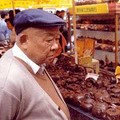
Quotes Tags: Pu-erh, Tea production, China
„Meng-Hai Tea Factory started to use the trademark "Da-Yi" around 1978. Xia-Guan Tea Factory started to register the trademarks "Song-He" and "Nan-Zhao" in 1992.“

Quotes Tags: Pu-erh, Tea production, China
„Black Puerh Tea was invented by Kunming Tea Factory in 1972/73 and was manufactured in Xia-Guan Tea Factory ever since 1976. It is now manufactured in many different factories and is by far the most popular type of puerh sold.“

Quotes Tags: Pu-erh, Shu - Ripe Puerh, Tea production, China
„Standard Tuocha tea were defined to weigh 100 gram each. Five make 1 Tong.“

Quotes Tags: Pu-erh, Tuocha, Tea production, China
„Brick Tea was mainly produced in the Si-Chuang province prior to 1949. It is now also available in other provinces as well.“

Quotes Tags: Pu-erh, Brick, Tea production, China
„In 1940, the Chinese State owned company CNNP started to manufacture Pu Erh Tea with a trademark "Zhong-Cha" at the Fo-Hai Tea Factory (now called "Meng-Hai Tea Factory"). Later, Yun-Nan Tea Company and Guang-Dong Tea Company also produced the same brand and started to export abroad. There were varieties such as red-label, green-label, yellow-label, small-letter and big-letter etc.“

Quotes Tags: Pu-erh, Tea production, China
„Mushroom shaped tea appeared in 1912. It was invented at that time in order to prevent the tea from going mouldy during the transportation. It was produced in Xia-Guan and Fo-Hai (two cities in south China) with the trademark "Bao-Yan". The production was then stopped in 1966. In 1986, the production was resumed due to the request of Buddhists in Tibet.“

Quotes Tags: Pu-erh, Mushroom - Jin Cha, Tea production, China
„Head Tea (aka Golden Melon) is shaped like a ball, weighing between 2 Liangs and 10 Jins ( 1 Jin = 500 grams). They were mainly for domestic trade or serving as tributes to emperors. Stacks of Golden Melons progressing in size from gigantic to small are considered to be a status symbol.“

Quotes Tags: Pu-erh, Tea production, China
„The most classical Puerh Tea is the Bingcha, recorded in Yong-Zheng 13th year in Qing Dynasty (1735). Each tea cake weighs 7 Liang (357 grams). Seven cakes make 1 Tong (wrapped in leaves), weighing 49 Liang. It was sold in nice places and also was exported abroad. It was re-named as "Yunnan Qizi bingcha - Yunnan seven cake tea" during the Cutural revolution.“

Quotes Tags: Pu-erh, Cake, Tea production, China
„Yunnan Tea Company standardized the trade number for Pu Erh Tea in 1976 for the purpose of export. Each bingcha has 4 digits: the first 2 digits indicate the manufacturing year, the third digit indicates the leaf grade, the last digit indicates the tea factory (e.g. Kun-Ming 1, Meng-Hai 2, Xia-Guan 3, Pu Erh 4). The loose-leaf tea has 5 digits with the third and fourth indicating the class level of raw materials. Examples of early trade numbers for Puerh Tea are 7452, 7562, 7572, 75671, 76563.“
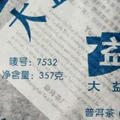
Quotes Tags: Pu-erh, Tea production, Cake, China
„In the Western market, tea drinkers often end up buying a few pots in the beginning that don’t quite “fit.”
Maybe the size is wrong, the clay is poor, or is simply not a match to any of our desired teas. Perhaps the shape and craftsmanship are just not pleasing to us.
Owning bad teapots, experienced collectors will remind you, is “tuition” that helps you start to recognize better teapots from the others.“
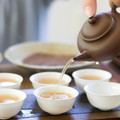
Quotes Tags: Pu-erh, Tea infusion, Experiencing tea
„Some more obvious manifestations of cha qi are a heating or cooling of the extremities (eg, sweaty palms when drinking a ‘warming’ tea like aged puerh or heavily roasted oolong), a flushing of the face, or a measurable change in mood. In a small group, tea can either lead to deep conversation, giddy laughter, or contemplative silence.“
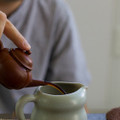
Quotes Tags: Pu-erh, Experiencing tea
„Possibly the most nebulous of tea’s qualities are ascribed to 茶氣 [chá qì] — a tea’s “energy.” Most readers will probably be familiar with at least some of the wide ranging effects it is attributed with. Practically any physical or mental stimulus outside of the mouth, nose, and throat falls into the realm of cha qi.“

Quotes Tags: Pu-erh, Experiencing tea
„The next place to focus is feeling in the throat. Tea here can be cooling or warming, rough or wet. Often drinking good tea will give you the sensation of a ball in your throat. It is good to consider how far down the tea goes — in other words, where the sensation is no longer apparent. If the tea slips down without any notice, it is just a drink. Many good teas will stop somewhere in the middle of your throat. If it gives a pleasant feeling all the way down to your core, it is truly something special.“

Quotes Tags: Pu-erh, Experiencing tea
„After initial taste and aroma, the first thing tea drinkers are likely to focus on is known in Chinese as 回甘 [huí gān]. In English, a near literal translation is “Returning Sweetness,” but we can think of this loosely as aftertaste. You can experience this clearly in most good teas, and probably already have. In the best teas, though, the taste can go on for hours.“

Quotes Tags: Pu-erh, Experiencing tea
„zhang wei; 樟味 - Camphor flavour. This is sometimes present in old tea tree Puer. Due, it is said, to the presence of Camphor Laurels in tea gardens where they were planted as a form of natural pest control. “

Quotes Tags: China, Experiencing tea, Pu-erh
„yun; 韵. Charm, appeal, allure. A difficult term to render into English as it refers to a quality of tea that 'cannot be apprehended by the five senses.' Generally used with hou; 喉 - throat. Hou yun. A pleasant feeling that lingers in the throat after swallowing tea. Distinct from hui-gan. “

Quotes Tags: China, Experiencing tea, Pu-erh
„Yu Shui Cha; 雨水茶. Literally Rain water tea. Summer Tea. Less prized than Spring Tea or Autumn Tea. The flavour is usually less fulsome than Spring tea. Also, it is often oven-dried (hong qing; 烘青) as it is harvested in the rainy season.“

Quotes Tags: Tea production, China, Pu-erh
„wo dui; 渥 - Wet, 堆 heap/pile - Wo dui - 渥堆, Literally wet -pile The process of 'pile fermentation which is used to make 'aged' Puer tea.“

Quotes Tags: Shu - Ripe Puerh, Pu-erh, Tea production, China
„tong feng; 通风 - air-flow. Puer should be stored somewhere where there is a little air movement - it doesn't need to be much. Even if it is quite humid, the airflow will guard against tea developing mould. However, care should be taken that tea is not stored in a draft which will dry the tea tea out.“

Quotes Tags: Pu-erh, Tea production, China
„tong; 筒 - Literally a barrel or barrel shaped object. A tong in Yunnan tea culture is a bundle of 7 tea cakes wrapped in the outer skin of bamboo which naturally sheds from around the base of the bamboo stem. Each cake weighs 357grams so making a total of 2,499 gm. Said by some to have been calculated in order to remain under a specific legislated weight of 2.5 kg. There were originally said to be 8 cakes in a tong. The 8th being paid as a levy. An earlier unit of weight in China was the liang. A cake of tea weighed 7 liang and 7 cakes in a tong made 49 liang. “

Quotes Tags: Pu-erh, Tea production, Yunnan, China
„tian xiang; 甜香 - 甜, tian - sweet.香, xiang - fragrant. Used to refer to Puer tea that has a sweet - fragrant flavour “

Quotes Tags: Pu-erh, China, Experiencing tea
„shi cang; 湿仓 - wet storage. Storage that is intentionally humid. Done in order to attempt to speed up the ageing process of Puer tea. It has risks associated with it from effectively shortening the 'life' of the tea, having a deliterous effect on the plant constituents - not least the aromatics compounds to ruining the tea altogether.“

Quotes Tags: Pu-erh, Tea production, China, Experiencing tea
„sheng; 生 - Raw, uncooked, un-processed. Here used to refer to Puer tea that is made from maocha that does not undergo further processing, other than steaming and pressing where it is made into cake, brick, etc. form.“

Quotes Tags: Sheng - Raw Puerh, Pu-erh, China
„shai qing; 晒青 - Sun dried. This is a critical aspect of Puer Tea processing. Oven dried tea is considered inferior to sun-dried. The Provincial Government has ruled that Puer tea must be sun-dried.“

Quotes Tags: Pu-erh, Tea production, China
„Yunnan Provincial Government has stipulated that for tea to qualify as Pu er it must be:
i) of the Broad Leaf variety (Sinensis Assamica)
ii) grown in the Lancang (Mekong) River region
iii) sun dried. The third point is important as there is much tea grown in the Lancang River area that is not sun dried.
There are also increasing amounts of Small Leaf Variety (Xiao Ye Zhong /小叶种) being grown in the Lancang River area.“

Quotes Tags: Pu-erh, Tea production, Yunnan, China, Lancang
„Pu'er Tea; 普洱茶. That 'Puer Tea' was given this name suggests that historically this kind of tea - post fermented camelia sinensis assamica must have come from the south and west of Puer for there to have been any sense in transporting it through that city. The majority of good Puer tea still comes from the Xishuangbanna region. Puer County itself was not an historically important tea producing region.“

„Pu'er; 普洱. Also Puerh, Pu - er etc. Pu'er is the modern pinyin spelling. The place name of the Old City of Pu'er through which pack horses transported the tea from Southern Yunnan. The names were recently changed; Pu'er is now Ning Er and nearby Simao has the adopted name of Pu'er. Locally, in spoken Chinese at least, Ning Er is still Pu'er. “

„ping wen; 平稳. Smooth, steady, even. Used to refer to the taste of tea. Puer should be smooth and steady without any sudden changes in the flavour as steepings progress. A sudden change or loss of flavour is an indicator of poor quality. Good Puer can be steeped 20 to 30 times and maintain it's flavour. “

Quotes Tags: Pu-erh, China, Experiencing tea
„Pang xie jiao; 旁鞋脚. Latin; (Viscum articulatum Burm.f.) Literally Crabs legs. A parasitic plant that grows on trees in sub-tropical regions. When it grows on the tea tree it absorbs flavour from the tree and makes a sweet, refreshing drink, hot or cool. Very limited availability. Puer cakes can be found that have Pangxiejiao mixed into the cake. Normally around 10-15%. It is also part of the Chinese medicine pharmacopoeia – said to have a diuretic effect and is used to clear heat“

Quotes Tags: Pu-erh, Tea production, China, Health
„nei xiang;内香 - refers to a kind of fragrance that is not 'yang' or obvious. Often not perceived till after the tea has been swallowed. Sometimes also 幽香 - you xiang.“

Quotes Tags: China, Experiencing tea, Pu-erh
„Ku Cha; 苦茶 - Bitter Tea. The tea from a variety of tea tree (Camelia Sinensis Assamica var.Kucha) found in an area around Mensong.“

Quotes Tags: China, Experiencing tea, Pu-erh
„ku se; 苦涩 - Bitter and astringent. The nature of new raw Puer is a little astringent and bitter, followed by a sweet aftertaste. However, a bitterness with no sweet aftertaste is not typical of Puer and an astringency which is not comfortable would not be considered good tea. “

Quotes Tags: Sheng - Raw Puerh, Pu-erh, China, Experiencing tea
„kou gan; 口感 - Literally mouth-feeling. Dictionary definitions vary between mouth-feel referring strictly to textural character - i.e. 质地/zhi di, others to a broader definition of flavour. In tea drinking it is largely referring to the former, but cannot be easily separated from other gustatory and olfactory sensations.“

Quotes Tags: China, Experiencing tea, Pu-erh
„hou long; 喉咙 - The throat. Often used in describing the experience of tea drinking. A pleasant feeling in the throat is a key factor in evaluating the quality of tea; 喉咙舒服/喉咙不舒服 - a comfortable or uncomfortable feeling in the throat.“

Quotes Tags: China, Experiencing tea, Pu-erh
„hui gan; 回甜 - Hui 回- return, come back, reply. 甜, gan-sweet. Together - sweet return, sweet aftertaste. Used generally to refer to the aftertaste of tea, be it sweet or not.“

Quotes Tags: Tea infusion, China, Experiencing tea, Pu-erh
„hong; 红 - red. In China, what is called black tea in the English speaking world, is called red. Cooked Puer is sometimes mistakenly referred to as a black tea.“

Quotes Tags: Shu - Ripe Puerh, Red tea, Black tea, Pu-erh, Tea production, China
„gan cang; 干藏 - dry storage. Referring to tea storage that tends to be dry rather than excessively humid. Storing raw Puer in an excessively dry climate will have a harmful effect on the tea.“

Quotes Tags: Sheng - Raw Puerh, Pu-erh, China, Experiencing tea
„gan; 干 - dry. Sometimes used to describe a certain feeling in the mouth, typically on the tongue or in the throat that is either due to the nature of the tea, or the way it has been processed or stored. Distinct from astringrent. See also 燥/zao“

Quotes Tags: China, Experiencing tea, Pu-erh
„fa jiao; 发酵 - To ferment/fermented. Shu Puer tea is a made by a process of fermentation. Raw puer is referred to as hou fa jiao cha - post-fermented tea -which technically is said to be a mix of oxidation and fermentation.“

Quotes Tags: Sheng - Raw Puerh, Pu-erh, Tea production, China
„da piao; 大票 - large ticket. The bigger loose label or ticket which is found inside a tea cake wrapper “

Quotes Tags: China, Pu-erh, Tea production
„chui niu; 吹牛. 吹 - chui, to blow. 牛 - niu, cow, but in this case can be read as 公牛 or bull. An almost default aspect of tea drinking - 'shooting the bull'. The talk that often accompanies tea drinking and can be peppered with much knowledge, a little exaggeration and some humour. Also 吹牛皮. 皮 - skin or hide. 'Blowing the bulls hide.'“

Quotes Tags: Teahouse, China, Experiencing tea, Pu-erh
„chen wei; 陈味 - Aged, mellow. An expression which in Chinese can be used to refer to the flavour of aged alcohol, tea, etc. “

Quotes Tags: China, Experiencing tea, Pu-erh
„cha yi; 茶仪 - Tea ceremony. Not generally used to refer to the daily habit of tea making and drinking. Most habitual tea drinkers would be unlikely to use this term in reference to their tea-making activities. Not common parlance in Yunnan tea making circles“

Quotes Tags: Tea infusion, China, Experiencing tea, Pu-erh
„cha qi; 茶气 - Tea nature. The inherent energetic qualities in tea. That which makes it tea. Sometimes rather unsatisfactorily interpreted as 'tea energy'; translating qi as energy suggests perhaps a rather too narrow idea of qi but it is an interesting term to consider since many people use the term. Ideas and experiences of cha qi vary considerably; the taste of tea, the appearance of the leaves (particularly after steeping i.e. the life in the tea), any physical or psychological experiences one may have as a result of drinking tea are all aspects of cha qi. One cannot satisfactorily dissociate one from the other just as one cannot isolate sunshine from wind, which are both manifestations of weather, tian qi. If it did not have cha qi it wouldn't be tea, it would be something else. From a western point of view perhaps, cha qi is due, in some good part, to the presence of caffeine, theine, etc. The active constituents.“

Quotes Tags: China, Experiencing tea, Pu-erh
„cang wei; 仓味. The flavour of tea that has been stored (poorly). Often used to refer to the aroma of 'Wet Stored' tea.“

Quotes Tags: China, Experiencing tea, Pu-erh
„bing; 饼 - cake. Something shaped like a cake. 茶饼; cha bing - tea cake. This is a cake of tea that has been pressed by hand or machine into a compact form. Easy for transporting and storage. The more tightly pressed it is, the slower the tea will age. They can range in size from 100 gms to several kilograms.“

Quotes Tags: Pu-erh, Tea production, China
„bao, 薄 - thin, flimsy, weak. Used to describe tea that is lacking in flavour, body, 'thickness'. “

Quotes Tags: China, Experiencing tea, Pu-erh
„Pu-erh shape - Melon, or gold melon - Its shape is similar to tuóchá, but larger in size, with a much thicker body decorated with pumpkin-like stripes. This shape was created for the famous "Tribute tea" (貢茶) made expressly for the Qing Dynasty emperors from the best tea leaves of Yiwu Mountain. Larger specimens of this shape are sometimes called "human-head tea" (人頭茶), due in part to its size and shape, and because in the past it was often presented in court in a similar manner to severed heads of enemies or criminals.“
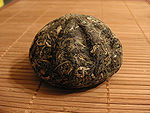
„Pu-erh shape - Mushroom - Literally meaning "tight tea," the tea is shaped much like túocha, but with a stem rather than a convex hollow. This makes them quite similar in form to a mushroom. Pu'er tea of this shape is generally produced for Tibetan consumption, and is usually 250g or 300g.“
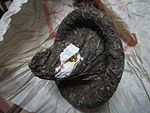
Quotes Tags: Pu-erh, Mushroom - Jin Cha
„Pu-erh shape - Square - A flat square of tea, usually in 100g or 200g sizes, they often contain words pressed into the square.“
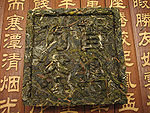
Quotes Tags: Pu-erh
„Pu-erh shape - Brick - A thick rectangular block of tea, usually in 100g, 250g, 500g and 1000g sizes; Zhuancha bricks are the traditional shape used for ease of transport along the ancient tea route by horse caravans.“
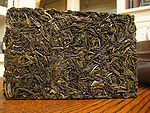
„Pu-erh shape - Tuocha, Bowl, or Nest - A convex knob-shaped tea, its size ranges from 3g to 3 kg or more, with 100g, 250g and 500g being the most common. The name for tuocha is believed to have originated from the round, top-like shape of the pressed tea or from the old tea shipping and trading route of the Tuo River.[16] In ancient times, tuocha cakes may have had holes punched through the center so they could be tied together on a rope for easy transport.“
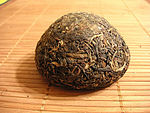
„Pu-erh shape - Bing, Beeng, Cake, or Disc - A round, flat, disc or puck-shaped tea, the size ranges from as small as 100g to as large as 5 kg or more, with 357g, 400g, and 500g being the most common. Depending on the pressing method, the edge of the disk can be rounded or perpendicular. It is also commonly known as Qīzí bǐngchá (七子餅茶, literally "seven units cake tea") because seven of the bing are packaged together at a time for sale or transport.“
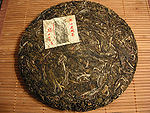
„Aside from vintage year, pu'er tea can be classified in a variety of ways: by shape, processing method, region, cultivation, grade, and season.“
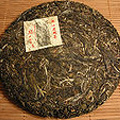
Quotes Tags: Pu-erh
„Depending on the desired product and speed, from quickest and tightest to slowest and loosest, pressing can be done by a large heavy stone, carved into the shape of a short cylinder with a handle, simply weighs a bag of tea down onto a wooden board. The tension from the bag and the weight of the stone together give the tea its rounded and sometimes non-uniformed edge. Due to the manual labor involved, this method of pressing is often referred to as: "hand" or "stone-pressing", and is how many artisanal pu'er bǐng are still manufactured.“

Quotes Tags: Pu-erh
„Depending on the desired product and speed, from quickest and tightest to slowest and loosest, pressing can be done by a lever press, which was operated by hand for tight pressings and has largely been replaced by the modern hydraulic press.“

Quotes Tags: Pu-erh
„Depending on the desired product and speed, from quickest and tightest to slowest and loosest, pressing can be done by a hydraulic press, which forces the tea into a metal form that is occasionally decorated with a motif in sunken-relief. Due to its efficiency, this method is used to make almost all forms of pressed pu'er.“

Quotes Tags: Pu-erh
„To produce pu'er, many additional steps are needed prior to the actual pressing of the tea. First, a specific quantity of dry máochá or ripened tea leaves pertaining to the final weight of the bingcha is weighed out. The dry tea is then lightly steamed in perforated cans to soften and make it more tacky. This will allow it to hold together and not crumble during compression. “

Quotes Tags: Pu-erh
„Some tea collectors believe "ripened" Sheng Cha should not be aged for more than a decade.“

Quotes Tags: Pu-erh, Shu - Ripe Puerh
„This process was first developed in 1972 by Menghai Tea Factory and Kunming Tea Factory] to imitate the flavor and colour of aged raw pu-erh, and was an adaptation of wet storage techniques being used by merchants to falsify the age of their teas. Mass production of ripened pu'er began in 1975. It can be consumed without further aging, though it can also be stored to "air out" some of the less savoury flavors and aromas acquired during fermentation.“

Quotes Tags: Pu-erh, Shu - Ripe Puerh
„Poor control in fermentation/oxidation process can result in bad ripened pu'er, characterized by badly decomposed leaves and an aroma and texture reminiscent of compost.“

Quotes Tags: Pu-erh, Tea oxidation, Shu - Ripe Puerh
„The piling, wetting, and mixing of the piled máochá ensures even fermentation. The bacterial and fungal cultures found in the fermenting piles were found to vary widely from factory to factory throughout Yunnan, consisting of multiple strains of Aspergillus spp., Penicillium spp., yeasts, and a wide range of other microflora. Control over the multiple variables in the ripening process, particularly humidity and the growth of Aspergillus spp., is key in producing ripened pu'er of high quality.“

Quotes Tags: Pu-erh, Yunnan, Shu - Ripe Puerh
„The process used to convert máochá into ripened pu'er is a recent invention that manipulates conditions to approximate the result of the aging process by prolonged bacterial and fungal fermentation in a warm humid environment under controlled conditions, a technique called Wò Dūi (渥堆, "wet piling" in English), which involves piling, dampening, and turning the tea leaves in a manner much akin to composting.“

Quotes Tags: Pu-erh, Shu - Ripe Puerh
„‘Ripened’ Shou Cha (熟茶) tea is pressed maocha that has been specially processed to imitate aged "raw" Sheng Cha tea. Although it is also known as cooked pu-erh, the process does not actually employ cooking to imitate the aging process. The term may come about due to inaccurate translation due to the dual meaning of shú (熟) as both "fully cooked" and "fully ripened".“

Quotes Tags: Pu-erh, Sheng - Raw Puerh, Shu - Ripe Puerh, Maocha
„Once dry, maocha can be sent directly to the factory to be pressed into raw pu'er, or to undergo further processing to make ripened pu'er. Sometimes Mao Cha is sold directly as loose-leaf "raw" Sheng Cha or it can be matured for 2–3 years in loose leaf form due to the faster rate of natural fermentation in an uncompressed state. This product is then pressed into numerous shapes and sold as "raw" Sheng Cha as a more matured final product.“

Quotes Tags: Pu-erh, Sheng - Raw Puerh, Maocha
„Unlike green tea produced in china which is dried with hot air after the pan-frying stage to completely kill enzyme activity, leaves used in the production of pu-erh are only pan-fried and thus a small amount of enyzmes are left which contribute a minor amount of oxidation to the leaves during sun-drying“

Quotes Tags: Pu-erh, Tea oxidation
„The leaves are then dry pan-fried using a large wok in a process called "kill green" (殺青; pinyin: shā qīng), which arrests most enzyme activity in the leaf and prevents full oxidation. After pan-frying, the leaves are rolled, rubbed, and shaped into strands through several steps to lightly bruise the tea and then left to dry in the sun.“

Quotes Tags: Pu-erh, Tea oxidation
„After picking appropriate tender leaves, the first step in making raw or ripened pu'er is an optional wilting/withering stage, thus converting the leaf to maocha.“

Quotes Tags: Pu-erh, Sheng - Raw Puerh, Shu - Ripe Puerh, Maocha
„Pu-erh is typically made through the following steps:
1. green/raw 青普: sun fixation 曬青 > rolling 揉捻 > sun drying 曬乾:
2. dark/ripe 熟普: sun fixation 曬青 > rolling 揉捻 > Wo Dui (piling) 渥堆 > sun drying 曬乾:
3. added processes: green and dark pu'er can be compressed/shaped into cakes and aged.“

Quotes Tags: Pu-erh, Sheng - Raw Puerh, Shu - Ripe Puerh, Tea production
„The fermented dark tea, Hei Cha (黑茶), is one of the six classes of tea in China, and pu-erh is classified as a dark tea (defined as fermented), something which is resented by some who argue for a separate category for pu-erh tea.“

„Ripened or aged raw pu-erh has occasionally been mistakenly categorised as a subcategory of black tea due to the dark red colour of its leaves and liquor. However, pu-erh in both its ripened and aged forms has undergone secondary oxidization and fermentation caused both by organisms growing in the tea and free-radical oxidation, thus making it a unique type of tea. This divergence in production style not only makes the flavour and texture of pu-erh tea different but also results in a rather different chemical makeup to resulting brewed liquor.“

Quotes Tags: Pu-erh, Tea oxidation, Sheng - Raw Puerh, Shu - Ripe Puerh
„Pu-erh leaves are picked as one bud and 3-4 leaves whilst green tea is picked as one bud and 1-2 leaves. This means that older leaves contribute to the qualities of pu-erh tea.“

Quotes Tags: Pu-erh
„While unaged and unprocessed, Maocha pu-erh is similar to green tea. Two subtle differences worth noting are that pu-erh is not produced from the small leaf chinese varietal but the broad leaf varietal mostly found in the southern Chinese Provinces and India.“

„Maocha can be sold directly to market as loose leaf tea, compressed to produce "raw" Sheng Cha, naturally aged and matured for several year before being compressed to also produce "raw" Sheng Cha or undergo Wo Dui ripening for several months prior to being compressed to produce "ripe" Shou Cha.“

Quotes Tags: Pu-erh, Sheng - Raw Puerh, Shu - Ripe Puerh, Maocha
„Pu-erh tea processing, although straightforward, is complicated by the fact that the tea itself falls into two distinct categories: the "raw" Sheng Cha and the "ripe" Shou Cha. All types of pu-erh tea are created from máochá (毛茶), a mostly unoxidized green tea processed from a "large leaf" variety of Camellia sinensis (C. sinensis assamica) found in the mountains of southern Yunnan.“

Quotes Tags: Pu-erh, Tea oxidation, Yunnan, Sheng - Raw Puerh, Shu - Ripe Puerh
„In recent decades, demand has come full circle and it has become more common again for Hei Cha, including Pu-erh, to be sold as the raw product without the artificial accelerated fermentation process.“

Quotes Tags: Pu-erh, Sheng - Raw Puerh
„Wo Dui - this new process produced a finished product in a manner of months that many thought tasted similar to teas aged naturally for 10–15 years and so this period saw a demand-driven boom in the production of Hei Cha by the artificial ripening method. “

Quotes Tags: Pu-erh, Shu - Ripe Puerh
„All types or pu-erh can be stored for maturity before consumption and that is why it has become common for the products to be labelled with year and region of production.“

Quotes Tags: Pu-erh
„The recently developed Wo Dui process (渥堆) pioneered by both the Menghai and Kunming Tea Factories has created a new type of pu-erh tea of which some traditionalists dispute the legitimacy. This process involves an accelerated fermentation into "ripe" Shou Cha (熟茶) which is then sold loose or pressed in various shapes.“

Quotes Tags: Pu-erh, Shu - Ripe Puerh
„Pu'er traditionally begins as a raw product known as "rough" Mao Cha (毛茶) and can be sold in this form or pressed into a number of shapes and sold as "raw" Sheng Cha (生茶). Both of these forms then undergo the complex process of gradual fermentation and maturation with time.“

Quotes Tags: Pu-erh, Sheng - Raw Puerh, Maocha
„The most famous variety of this category of tea is Pu-erh from Yunnan Province, named after the trading post for dark tea during imperial China.“

Quotes Tags: Pu-erh
„Fermentation is a tea production style in which the tea leaves undergo microbial fermentation and oxidation after they are dried and rolled. This process is a Chinese specialty and produces tea known as Hei Cha (黑茶), commonly translated to dark, or black tea (this type of tea is completely different from what in West is known as "black tea", which in China is called "red tea"). “

Quotes Tags: Pu-erh, Tea oxidation, Hei Cha
„Pu-erh tea, also spelled as Pu'er tea, is a variety of fermented dark tea produced in Yunnan province, China.“

„Hui Gan 回甘, Hui Tian 回甜, Sheng Jin 生津, & Hui Yun 回韻…In literally term, Hui Gan, sometimes referred to as Hui Wei, is to reflect sweetly on a past event. Borrowing from the term 'to reflect', Hui Gan in tea is, simply put, a reflection on the sweetness of the tea - when one drink the tea, when the tea slides through the cavity of the mouth into the throat, there comes, after a short while, a sweetness that rises up from the throat. This sweetness is sometimes accompanied with a fragrance. Do not keep the upper and lower mouth pressed together when sipping tea, but create a cavity instead by lowering the jaw. Let the tea wash over the entire inside of the mouth, and then direct the tea to slide from the sides of the jaw into the throat. While holding the empty cavity, breathe out instead of in after you swallow the tea, there is warmth in the breath accompanied by a fragrance, and the same fragrance that rises up from the throat. This is Hui Gan.“
Quotes Tags: Pu-erh, China, Tea infusion, Experiencing tea
„Pu-erh tea that has been preserved for few years is close to green tea in its properties and colour. Its taste is sweet tinged with a little bitterness. Its fragrance is pure and mild and lingers even after the tea is finished. While brewing raw tea, lower the water temperature. Serve immediately after pouring to avoid scorching the leaves and tainting the tea liquid with that smell.“
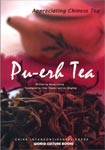
Quotes Tags: Pu-erh
Teas
2012 Yunnan Sourcing "Qiu Yun" Wild Arbor Raw
 1 review
1 reviewLate autumn harvest tea from wild arbor tea trees (between 60 and 80 year old) growing in the area of Yi Bi...
2014 Chawangpu "Lao Yu" Xiao Bing Cha
 1 review
1 reviewLao Yu (老妪) : old woman Material for this cake came from a small Bulang minority village in...
2013 Early Spring Premium Yunnan Long Mei
 2 reviews
2 reviewsGrade: AAA Cultivar: Yunnan Da Ye Harvest area: Zhenyuan, Simao, Yunnan Yunnan green tea...
Theme
Tea by region
We will help you with tea selection.
Do you like quality loose tea?
We will help you to find the right one for you. Be inspired by tea ratings of other tea lovers. Rating stars could help you.


Review your cup of tea.
Review the tea you are drinking and help other tea lovers to find the right cup of tea.



Quotes
„Ripened or aged raw pu-erh has occasionally been mistakenly categorised as a subcategory of black tea due to the dark red colour of its leaves and liquor. However, pu-erh in both its ripened and aged forms has undergone secondary oxidization and fermentation caused both by organisms growing in the tea and free-radical oxidation, thus making it a unique type of tea. This divergence in production style not only makes the flavour and texture of pu-erh tea different but also results in a rather different chemical makeup to resulting brewed liquor.“



 Shops
Shops Share on Facebook
Share on Facebook






